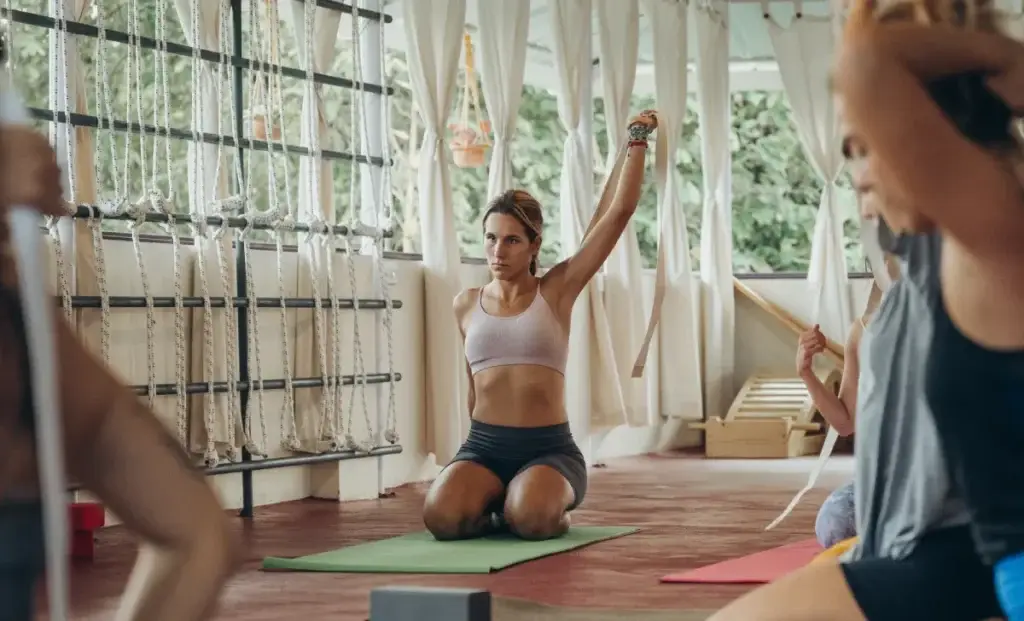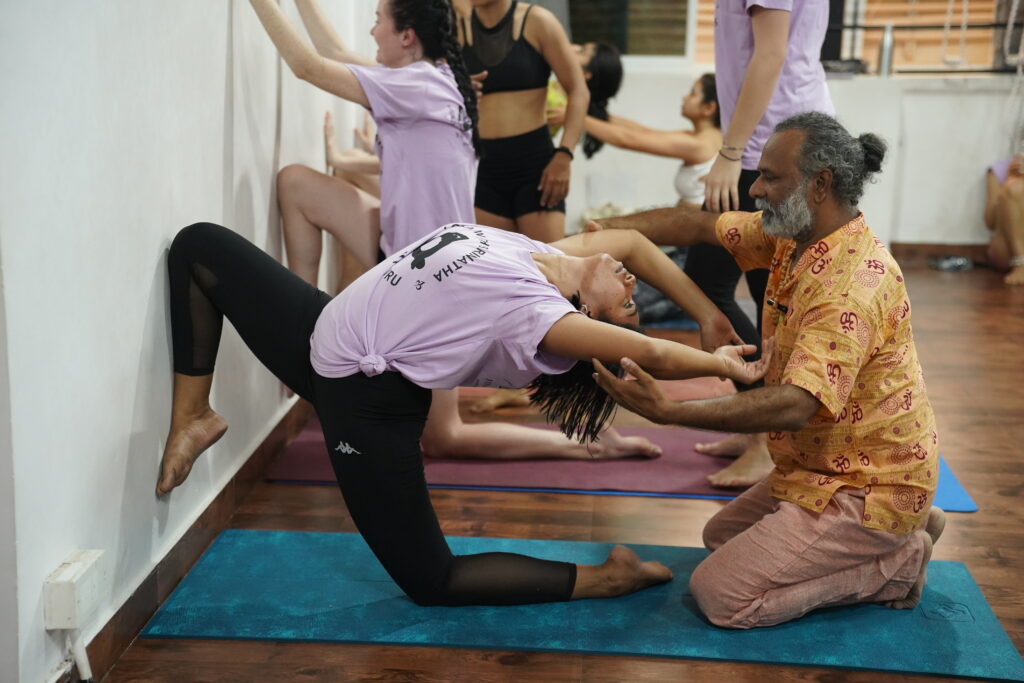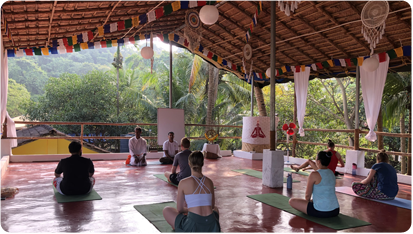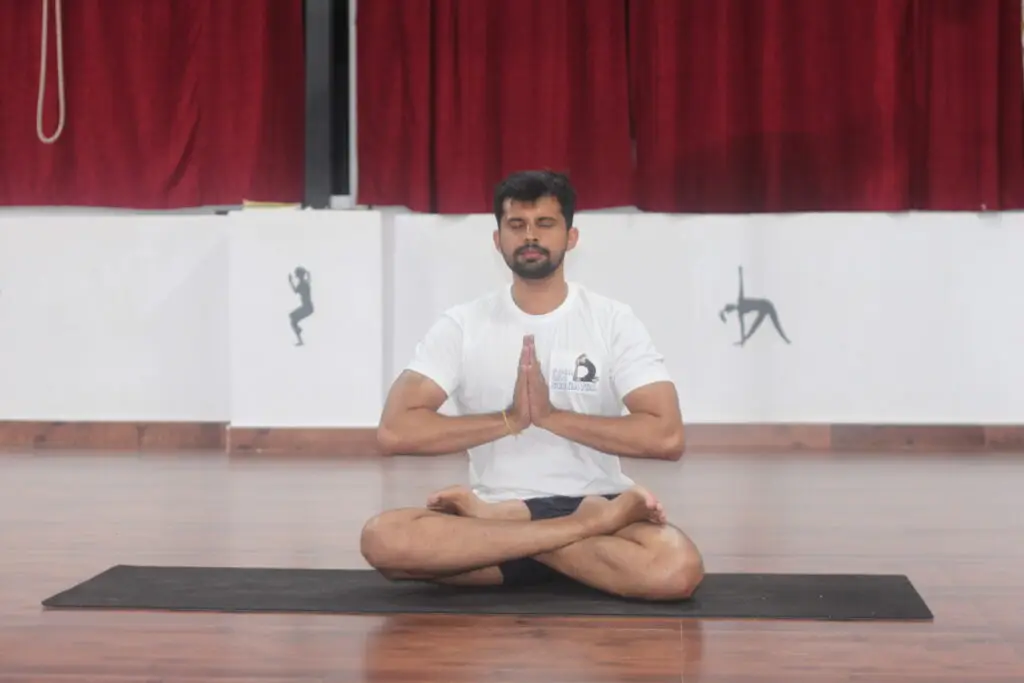Starting your professional career as a yoga teacher can be extremely overwhelming but also exciting. When you have spent the required hours completing the yoga teacher training, stepping out of the student role and becoming a teacher feels like a whole new universe. But the truth is, every yoga teacher feels the same way before starting their teaching career.
Always remember that teaching is not about knowing every posture, it is about guiding others for a healthier lifestyle through practice. In the beginning, think about being more thoughtful, authentic, and real for your students rather than being the perfect instructor. You already know the basics but you have to boost yourself through some real-world experiences.
Teaching yoga can be extremely rewarding as well. Sharing the yogic wisdom and watching others having benefits out of it because of your guidance is something you will always remember. This blog will tell you everything about how you can start teaching yoga as a beginner who just completed their certification.
Set Your Foundations Perfectly

Know your role
You should understand that you are a yoga instructor, neither a doctor, nor a physio. Your job is to guide your students regarding bodily movements, attention, and synchronized breathing. You are not responsible for diagnosing diseases or prescribing medicines. Encourage your class to listen to their bodies and if they have serious issues then recommend them to consult a doctor.
Ethics and Consent
Sharing the wisdom of yoga and teaching its practices also means that you are going to work with people’s bodies as well as emotions. It is important to prioritize and have clear consent before starting your sessions. Respect the boundaries of your students as it will help you in building trust.
Insurance and Legal Basics
You might need liability insurance depending on where you are teaching. This insurance will help you if a student gets injured in your class during the asana practice. Always make sure to provide a safe and supportive environment to your students so that there are no injuries but also have insurance as a safety net in case you need it.
Discover your Teaching Voice

Always remember that your words are your primary teaching tool, which will lead the room while you teach.
Practice Clear Cueing
Learning to give clear cues is extremely important while teaching yoga. It is just about giving simple and short instructions which are easy to understand as well as effective while practicing yoga. This skill will start getting better once you start having multiple sessions of teaching yoga. The more you teach, the more fluent you become in giving clear cues to your students.
Find Your Rhythm
Find your rhythm of teaching and don’t rush through the instructions. Calm down and breathe with your students. Take your time and be comfortable while teaching. Speak at the pace at which you will like them to move their bodies. After you give a specific cue, wait for a few moments and let your students process it.
Use Your Natural Voice
Don’t have a different voice while teaching yoga as it does not sound relatable or natural at all. In fact, speak in a tone which feels normal and calming to you and to the students. With enough experience, your teaching style will enhance and you will start becoming more and more authentic.
Plan your First Class as a Yoga Teacher

Planning your sessions is a part of being a great yoga instructor. The trick for this is to not overcomplicate the steps and start with some simple sequences, especially if you are planning your first class.
Start with Simple Sequences
You don’t need to create a new flow or sequence of asanas every week. Start with a small and effective routine of asanas which will benefit your students and build familiarity as well as confidence in you. Prepare yourself well for the sequence you decided and you can also rotate it or adjust it according to the requirement of the class.
Structure of a Beginner-Friendly Class (60 minutes)
- Centering (5 minutes): Start with some seated breathing asanas or a short body-scan.
- Warm-Up (10 minutes): Warming up your body is essential for better alignments of poses. You can go for some gentle movements of the spine like twists, stretches, or cat cow pose.
- Standing Sequence (20 minutes): Make sure to start your sequence with some sun salutations, balance poses and warrior asanas.
- Peak Pose (5–8 minutes): Practice asanas like Triangle or Bridge poses for better focus.
- Cool Down (10 minutes): For cooling down asanas you can choose from forward folds, some restorative asanas or gentle twists. F
- Savasana (5 minutes): Savasana should always be included in every session as it helps for deep resting.
Focus on Safety and Inclusivity

A good teacher always makes sure that their students are feeling welcomed, safe, and supported. Make a better sense of choices while giving cues to your students. Focus on making your sessions inclusive for all kinds of practitioners so that they don’t hesitate reaching out to you when required.
Keep a friendly environment in the class and remind your students to keep encouraging each other. During your yoga practice sessions, always keep the props handy, in case someone needs it. Normalize the use of props like blocks, straps, etc as they will help your students in having a safer and much more accessible class.
Start Small and Build Confidence

It doesn’t matter how much you have studied or practiced in the teacher training programs, only your first class is going to guide you and give you experience. Start small by teaching your friends, family or acquaintances as they will boost your confidence and give you honest feedback to improve. Your confidence won’t grow from the books you read but from teaching other people. Even if it feels uncomfortable at first, start teaching as soon as you finish your training and gain the experience.
At first, you might feel intimidated by the thought of teaching a class full of other practitioners. This is the reason you should always start with familiar faces and where the environment is supportive. You can also teach in front of a camera in order to self-analyse yourself. It is the most effective way to notice your habits, gestures, and cues you are giving. These early experiences will help you build comfort and strengthen your ability to hold space while stepping into the role of an instructor.
Your first real opportunity can come through yoga studios or centres organizing workshops. There are various yoga studios which keep a list of eligible yoga teachers handy in order to call them when their regular teacher is not available. Try to get on the sub lists of such studios to have great exposure and a proper yoga session. You can write a short email to the studio manager mentioning what is your training background and your teaching style. Make sure that the style of your communication is professional as well as warm. Stay flexible and proactive if the studio calls you last minute. Once you start showing up as a yoga teacher when required, you will have a great first impression which will compel them to invite you back for another session.
Handle the Business Side As Well
It is important to understand that once you start your professional career as a yoga instructor, it is necessary to focus on handling your business as well. This may not be as exciting as teaching yoga but it is what will help you sustain yourself while sharing the practice. For this, follow these steps-
Decide Your Rates
Discussions which involve money can be awkward and uncomfortable at first, but it is important to have clarity in your rates. Especially if you are a new teacher, make sure that you are aware of the studio class prices, private sessions, and corporate charges. The rates in the yoga studios depend on its location and size of the class whereas the private sessions are one-on-one classes tailored to the needs of the individual which is why they are priced on a higher range.
The corporate sector hires yoga instructors in order to support the mental as well as physical wellness of their employees. So instead of charging per person, they prefer to fix a specific rate for the whole group. Make sure to never underestimate your work and be confident about what you deserve.
Write Clear Policies
Whether you have private clients or a group from the corporate sector, make sure that you have a few simple policies that will help you in the future and save you from stressing out. Have a cancellation policy on how much duration before the client needs to give you notice regarding the cancellation of the yoga session. This way you will not be left with unpaid gigs during your schedule.
Decide whether you will accept payment per session, in monthly packages, or in advance. This will reflect your financial stability as well as commitment towards your work. If you’re teaching private clients or corporate groups, a few simple policies will save you endless stress down the line. Think of it as protecting both you and your students.
Keep Things Professional
Being professional in your work builds trust, which ultimately results in repetitive bookings from clients. Set yourself apart by being utterly organized and most reliable, let your private clients sign a simple waiver. This will acknowledge that you are not responsible for your client’s practices here. It is going to protect you legally if required.
Along with this, keep a record of your sessions, number of students, and payments. Make a simple spreadsheet with the help of Google or any other app and stay organized as a yoga instructor. Respond to all the inquiries as fast as you can and be professional about it. This will lead you to more teaching opportunities in the future.
Build your Community
Create a good connection with your students as they don’t just come for yoga but also for the overall experience. A yoga session is more than just poses, it is about being seen and supported. Let your first few minutes of every class make your students comfortable and welcomed. Learn the names of every student, greet every individual warmly, acknowledge and support the beginners, and support your class without building pressure. These small gestures play a vital role in making you a great yoga instructor.
Make the best use of social media by reaching the right type of audience. Share every class update, post short clips of teaching yoga and show your real personality to make your viewers feel relatable. Be consistent about your sessions and maintain punctuality. It helps your students to build a routine and also builds your reputation as a responsible teacher. You can also consider going beyond the mat to host casual drinks evenings with your students after class or create social media groups for encouragement and updates.



